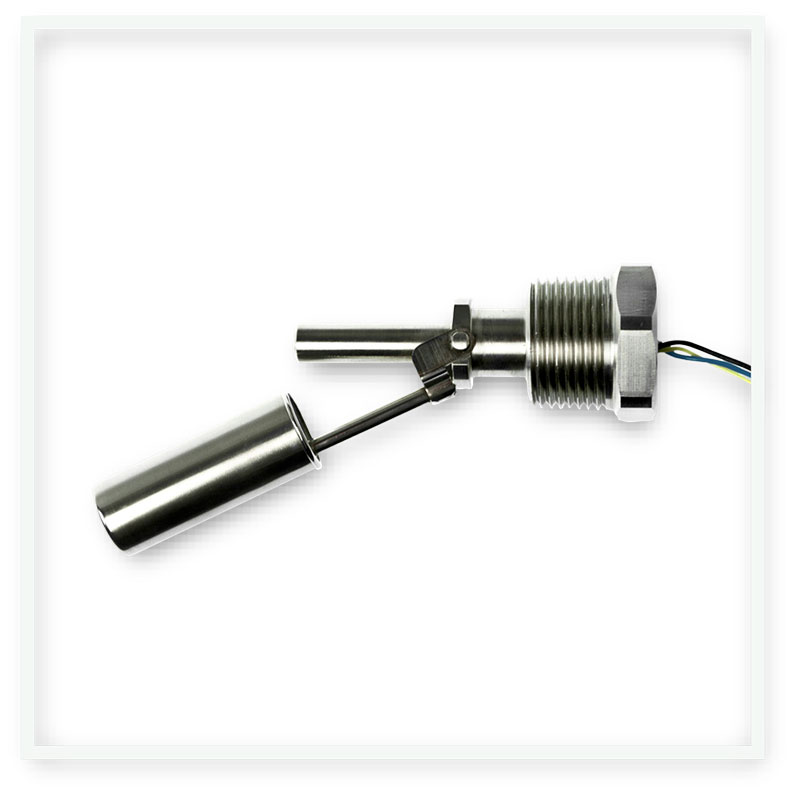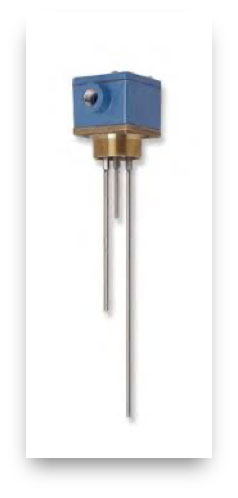In a wastewater evaporator, it’s easy to focus on the heat source, tank materials, or evaporation rates. But one small component often determines whether the system runs smoothly or experiences costly downtime: the level sensor. By monitoring liquid levels inside the tank, sensors keep the system balanced, prevent overfills, and protect equipment from damage.
A level sensor measures how much liquid is in the evaporator tank and communicates with the control system, which turns pumps, burners, or alarms on and off as needed. When liquid reaches a high level, the sensor signals the control system to shut down feed pumps. When the level drops too low, it can trigger alarms or shut off heaters to prevent dry-running damage. Without this safeguard, tanks can overfill, leading to spills, shutdowns, or even serious damage to the evaporator itself.
 Several types of sensors are used in industrial wastewater equipment, each with its own strengths and limitations. Float switches are mechanical devices that rise and fall with the liquid surface. They’re simple, reliable, and cost-effective, making them a popular choice for straightforward applications. However, they can stick if solids or sludge accumulate on the float mechanism, which means they need regular inspection and cleaning.
Several types of sensors are used in industrial wastewater equipment, each with its own strengths and limitations. Float switches are mechanical devices that rise and fall with the liquid surface. They’re simple, reliable, and cost-effective, making them a popular choice for straightforward applications. However, they can stick if solids or sludge accumulate on the float mechanism, which means they need regular inspection and cleaning.
 Conductivity probes measure the electrical resistance between two or more points in the tank. When liquid reaches a certain level, the probe completes a circuit, signaling the control system to take action. These probes work well with conductive wastewater and are generally affordable. They do require periodic cleaning to remove buildup that can interfere with accurate readings.
Conductivity probes measure the electrical resistance between two or more points in the tank. When liquid reaches a certain level, the probe completes a circuit, signaling the control system to take action. These probes work well with conductive wastewater and are generally affordable. They do require periodic cleaning to remove buildup that can interfere with accurate readings.
Ultrasonic or radar sensors send a signal to the liquid surface and measure how long it takes to bounce back. These provide accurate readings without direct contact with the liquid, which makes them ideal for corrosive or high-temperature applications. The downside is that they tend to be more expensive than other options and can be thrown off by foam on the liquid surface.
An overfilled evaporator is more than an inconvenience. Spilled wastewater creates a mess that must be cleaned up immediately and may expose a facility to regulatory penalties. Overfills can also damage pumps, motors, or electrical components, leading to costly repairs and unplanned downtime. Beyond equipment concerns, overfills create safety hazards for operators who must clean up chemical-laden water around hot equipment.
Choosing the right sensor depends on your specific application. For clean liquids in simple systems, a float switch often does the job. For conductive wastewater in most industrial settings, conductivity probes offer a good balance of cost and reliability. When dealing with extreme conditions, corrosive chemicals, or foaming liquids, ultrasonic or radar sensors may justify their higher cost.
No matter which type you choose, regular maintenance is critical. Float switches should be inspected monthly for signs of sticking or mechanical wear. Conductivity probes need cleaning to remove scale and buildup that can prevent proper contact. Even non-contact sensors benefit from occasional checks to verify accuracy and ensure mounting hardware remains secure.
Level sensors may seem like a small detail in the design of a wastewater evaporator, but they play a central role in keeping systems safe and efficient. By preventing overfills, they protect equipment, avoid costly downtime, and give operators confidence that their system is running as intended. Choosing the right sensor for your application and maintaining it properly is one of the simplest ways to protect your evaporator investment.
David N Lyman, a mechanical engineer with 40 years of industrial experience. Currently the president of RunDry Evaporators™.
